Considered to be one of the most challenging treks in entire Himalayan range, The Snowman Trek is one quest that’s waiting to be achieved by many. Many people have been unsuccessful of this alpine quest due to altitude sickness and duration as the trek route falls along northern mountains and passes of Bhutan with some ascend as high as about 5000m above mean sea level. However, aside from being challenging the trek offers scenic views of northern Himalayan peaks of Bhutan which also boasts to be the highest unclimbed mountains in the world.
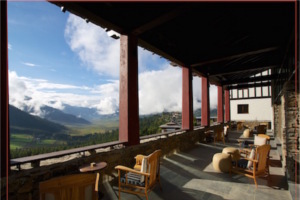
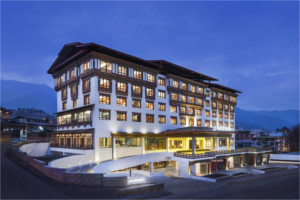
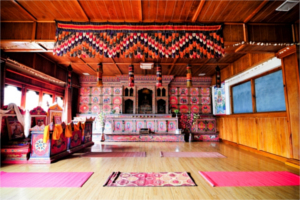
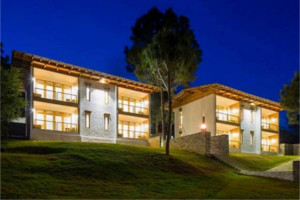
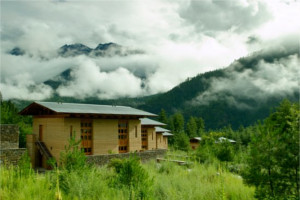
Welcome reception by our representative at the airport. Drive 40min to Thimphu capital city from Paro. Visit around the Thimphu town.
Overnight at Thimphu.
Breakfast
Visit the National Memorial Chorten (Stupa), built in memory of the 3rd King of Bhutan. Visit the Art School and Changangkha Lhakhang (a temple built in 12th century by a Tibetan saint).
Lunch
Visit the National Takin Reserve Center to see Takin, the national animal of Bhutan and Trashichhodzong (fortress of glorious religion). Trashichhodzong in its current form was completed in 1968 and it houses the throne room of His Majesty the King of Bhutan. It is also a center of monastic body and houses main secretariat building. The majestic Dzong located along the Wangchu (Thimphu River) has a Tendrel Thang which is the venue for Thimphu Dromchoe and Thimphu Tsechu, the annual Thimphu Festival where thousands of people fill the courtyard to witness the mask dances, traditional dances, and many more.
Visit Semtokha Dzong, five miles from main Thimphu town, the Dzong is considered to be the first ever built by Zhabdrung Ngawang Namgyel in 1629, therefore the oldest fortress in Bhutan. Located on a ridge overlooking the entire valley, the Dzong houses a chapel for protective deities Yeshe Goenpo (Mahakala) and Palden Lhamo of Bhutan.
Visit handicraft market and centenary farmers market.
Overnight at Thimphu.
Stop at Dochula pass 3100m on route to Punakha from Thimphu. Dochula pass is one of the famous landmarks in Bhutan from which one can sight the Himalayan Range of Bhutan on clear winter days. The place is adorned with Druk Wangyel Chorten, 108 stupas built to honor the 4th king of Bhutan and bring peace to the region. The stupas were built under the patronage of Ashi Dorji Wangmo Wangchuck.
Descend to Punakha Valley (1280m).
Punakha valley served as the capital of Bhutan till 1955 until it was shifted to Thimphu. The Punakha Dzong is still the winter seat of Je Khenpo (Chief Abbot) of the monastic body as the place has a temperate climate with Phochu and Mochu Rivers flowing through the fertile fields of the valley.
Lunch by the riverside in Punakha with the view of Punakha Dzong.
Drive to Trashithang following the Mo Chu River.
Overnight at Punakha.
Start the trek alongside the river through a well-paved path. The trek route is through semi-tropical forests with gradual ascend towards Damji Village. The campsite at Damji is at an altitude of 2250m.
Overnight at the camp.
Start the trek through sub-tropical forests and villages towards Gasa Tsachu (hot spring).
Stop for Lunch nearby hot spring.
Continue a stiff ascend for about 2 hours till Gasa Dzong, which is the administrative headquarter of Gasa District.
Overnight at the Camp.
Early breakfast
Visit Gasa Dzong built in the 17th century the structure is administration headquarter of Gasa Dzongkhag.
Continue the trek with a steep ascend towards Belela pass (3700) through bamboo, rhododendron, juniper, and fir forest.
Reach Belela pass and continue the trek with descending for about half an hour towards camp at Chamsa (3560m)
Overnight at the camp.
Start descending towards Mo Chu bank.
Break for lunch nearby the river bank.
Continue the trek with a gradual climb towards an army camp and then to Laya (3800m)
Overnight at the camp.
Take a day to see around the village in Laya, visit houses and the people.
Cultural show in the evening by locales around a camp fire.
Overnight at the camp.
Descend down from Laya towards an army camp and continue the trek alongside the river till Rhodophu.
Break for lunch.
Start climbing uphill through rhododendron forests towards the campsite (4350m).
Overnight at the camp.
Start early as the trek is the longest of all. Start at 5 am to climb towards Tsimolo pass (4700m). After crossing the pass and with a little climb offers the view of the beautiful valley of Lunana, Mt. Jhomolhari, and Mt. Jichu Drakey.
Continue a straight flat trek for four hours till a demanding climb to Kangla Karchula pass (5080m). The pass offers the view of Mt. Masagang, Mt. Tsendegang, and Mt. Teri Gang.
Descend from the pass till Tarina Valley (3980)
Overnight at the camp.
Follow the route through conifer forests following the upper reaches of Pho Chu. Start a climb up over the ridge and then descend to Woche at an altitude of 3800m.
Overnight at the camp.
Climb up to Kechela pass (4480m) through juniper and rhododendron forests. The pass offers a majestic view of Himalayan ranges.
Descend from the pass and follow the river till Lhedi village, nearby the village is the main source of Pho Chu river of Punakha.
Overnight at the camp.
Continue the trek alongside the river with a gradual ascend towards Choejung village.
Break for lunch.
Visit the Choejung Dzong and then continue to walk across a wide valley and reach Thanza.
Overnight at the camp.
Take a day to see around the village and also take a short climb to see the view of mountains and lakes.
Overnight at the camp.
Start the trek with a climb on a ridge with a beautiful view of Table Mountain and Thanza valley. The climb on a ridge starts from 4500m to 4650m. Further, climb till reaching the campsite.
Overnight at the camp.
Start with a short climb to Tsorim lake, walk alongside the lake while enjoying the view of Gophula Ranges, and continue a short climb towards Gophula pass (5230m).
Descend from the pass towards the base camp of Mt. Gangkar Phuensum (the highest unclimbed mountain in the world). Walk around the camp, over ridges, and river banks to have a better view of the landscapes.
Overnight at the camp.
Take a day break at the camp to see around the site talking short walks.
Overnight at the camp.
Leave the beautiful mountain and descend gradually following Sha Chu River towards Geshe Woma (4200m).
Overnight at the camp.
Continue to follow the river downstream for about half an hour until a stiff climb to Sakala pass (4800m).
Break for lunch nearby yak herder’s camp.
Start a short descend towards a lake until another short ascend to Wartangle pass (4590m)
Overnight at the camp.
Start a short ascend of half an hour to Juelela Pass (4400m) and then descend to the riverside through dense rhododendron, juniper and conifer forests. Cross a bridge and take a short climb to Dur Tshacu (hot spring). The hot spring is believed to have been the site where Guru Padmasambhava took bath.
Overnight at the camp.
Take a steady climb from the hot spring along with a great view of the mountains of Lunana. Trek route is across lakes and yak herder’s camps.
Overnight at the camp.
Last day of the trek.
Follow the Chamkhar Chu with frequent short descends and climbs until Dhur Village. Arrival at the village ends the excursion.
Transfer to a Hotel in Bumthang.
Overnight at Bumthang.
Early breakfast.
Visit Kurjey Temple
The name Kurjey means body print. Guru Padmasambava left his body print on a rock inside the main temple and can be seen to this day. The big cypress tree in the temple is believed to be the walking stick of Guru Rinpoche. The holy water beside the temple is also believed to be creation and blessing from him.
Visit Jambay Lhakhang Temple
This temple is one of the 108 temples built by the Tibetan King Songtsen Goempo in one single day as Paro Kyichu Temple. The temple hosts Guru Jowo Jampa the future Buddha its main statue. One of the most sacred festivals takes place here every year.
Visit Tamshing Lhakhang
The Tamshing Lhundrup Monastery is believed to be of Pemalingpa (1450-1521) the great Treasure Discoverer. The monastery is also on tentative lists of world heritage sites.
Visit Jakar Dzong
This Dzong stands majestically on a ridge overlooking the Bumthang valley. Dzong still has remains of the tunnel network which was used to fetch water during war. It is believed that Lam Ngagi Wangchuk chose the site for the construction of the Dzong in the lower valley of Chokor and while performing a ritual, a white bird is believed to have flown out of the site and landed on the place where the current Jakar Dzong is built. Considering this as an auspicious sign, a small Dzong was built and named Jakar meaning “White Bird”. The Dzong was enlarged to its current size in 1646 by Choegyal Minjur Tempa.
Visit the Handicraft center where one can find numerous arts of the locales.
Visit the Burning Lake
Mebartso which translates to “the burning lake” is at about 5 minute drives from the road point. The lake is named after Terton (treasure discoverer) Pema Lingpa. The treasure discoverer is believed to have gone into the lake with a lit butter lamp and came back with the lamp still burning while he discovered Guru Rinpoche’s hidden treasures, hence the name of the lake.
Visit Tang village and the Tang Nunnery founded by the 9th Gangtey Trulku Rinpoche. According to convenience and time, excursion to beautiful Ura Valley.
Overnight at Bumthang.
Drive back to Wangdue Phodrang which takes around 7 hours’ drive. Visit majestic Trongsa Dzong in Trongsa and Gangtey Goemba in Phobjikha valley on the way.
Visit around Wangdue valley.
Overnight at Wangdue.
Drive about 4 hour to Paro valley after breakfast. Visit around Paro town in the evening.
Overnight at Paro.
Visit the National Museum
Located on a ridge overlooking the Rinpung Dzong and the Paro valley is the Ta Dzong, built as a watch tower of the Dzong below. Unlike the rectangular shape of the Dzong, Ta Dzong is conical, more like that of a European caster. It was converted to Museum in 1967.
Paro Rinpung Dzong
This Dzong is known as the fortress of the heap of Jewels. Built in 1646 by Zhabdrung Ngawang Namgyel, the Dzong is historically rich is pride of Paro locales. The approach to the Dzong is through a traditional cantilever bridge.
Drukgyel Dzong
Visit the Dzong with a delightful village nestling at its foot. Built in 1646 by Zhabdrung Ngawang Namgyal to commemorate his victory over the Tibetan invasions, Drukgyel means the Victorious land of the Thunder Dragon. The Dzong caught fire in 1951 and remained as ruin until recently to commemorate birth of Gyalsey the Prince the Dzong is undergoing reconstruction to bring to its former glory.
Break for lunch.
Visit to the view point of Paro Taktsang (tiger’s nest)
Overnight at Paro.
daily tariff:USD 250 Per person per night
surcharges:
Solo Traveller: USD 40 per night
Dual Traveller: USD 30 per person per night
Three travellers and above: surcharges not applicable
Visa fees: One time payment of USD 40 per person.
daily tariff:USD 200 Per person per night
surcharges:
Solo Traveller: USD 40 per night
Dual Traveller: USD 30 per person per night
Three travellers and above: surcharges not applicable
Visa fees: One time payment of USD 40 per person.
A minimum of 3 star accommodation (4 & 5 star may require an additional premium).
All meals
A licensed Bhutanese tour guide for the extent of your stay
All internal transport (excluding internal flights)
Camping equipment and haulage for trekking tours